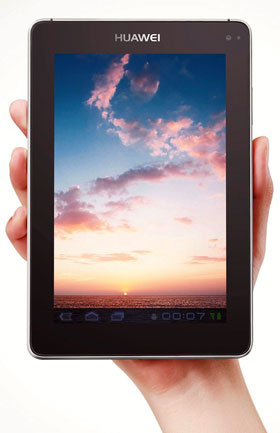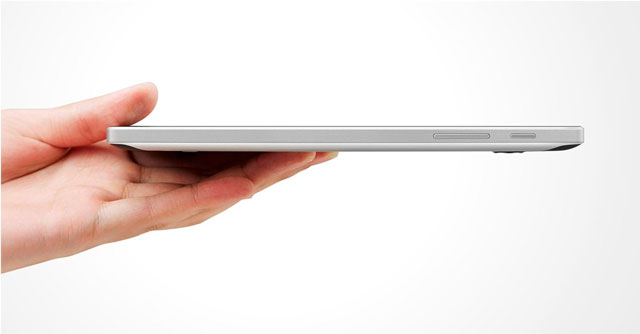 The global tablet market is still dominated by Apple’s iPad, but there are two gaps that Huawei, and other manufacturers such as Amazon.com and Samsung, are looking to fill: the sub-10-inch tablet and budget markets. With the MediaPad, Huawei hopes to address both. And it’s the company’s best offering to date, even if it’s not perfect.
The global tablet market is still dominated by Apple’s iPad, but there are two gaps that Huawei, and other manufacturers such as Amazon.com and Samsung, are looking to fill: the sub-10-inch tablet and budget markets. With the MediaPad, Huawei hopes to address both. And it’s the company’s best offering to date, even if it’s not perfect.
Huawei has been working to increase consumer awareness of its consumer brand in SA since it launched the Ideos S7 tablet range last July. It’s already made great inroads on the network equipment front and, with its competitive prices, it’s a brand well suited to developing markets where consumers are less inclined to spend large sums on what is often a third device.
At first glance, the MediaPad is a pretty standard Android tablet. Its packaging and even the rear of the device closely resemble the iPad and it offers a 7-inch 1 280×800 resolution display — which is a pretty impressive resolution for such a compact tablet.
There’s also 8GB of flash memory and support for Wi-Fi and 3G connectivity.
Though 8GB may sound a little tight-fisted, it’s easily expandable by up to 32GB via microSD. The microSD slot, along with the Sim card slot, are hidden behind one of the two black triangular panels on the rear of the device, meaning there are no slots or covers on the sides of the device.
The MediaPad feels decidedly high end compared to its predecessors, and this seems true of some of Huawei’s other design decisions, too, particularly the decision to install Android 3.2 (Honeycomb) on the MediaPad rather than the earlier versions that so often appear on smaller tablets.
The result is that the MediaPad can be upgraded to the Android Ice Cream Sandwich by downloading the firmware from Huawei and doing a tethered system update. Unfortunately, the update cannot be done wirelessly.
The front of the device is devoid of physical buttons. In fact, the only buttons on the device are the power/lock button and the volume rocker. The bottom edge carries a port for micro USB for syncing, a proprietary charging jack (it doesn’t charge through USB) and a mini HDMI-out port, but unfortunately there isn’t an HDMI cable included.
With a 1,2GHz Snapdragon processor and 1GB of RAM, the MediaPad is snappy and also plays 1080p video without a hitch. The rear camera shoots 5-megapixel stills while the front-facing version — top-left of the screen in landscape mode — is 1,3-megapixels.

The MediaPad also includes a GPS and accelerometer, a digital compass, and support for peripherals like keyboards via USB, assuming you can find any.
Weighing in at 390g, and measuring 190x124x10,5mm, the MediaPad isn’t the lightest in its class, but it’s very easily held in one hand and it trumps 10-inch tablets from a portability perspective.
Battery life isn’t the best either, with the official specs claiming around six hours, and real world use showing around five. Also, extended usage sees it getting rather warm.
The MediaPad is a capable device offering more functionality than your average 7-inch tablet but, at a recommended retail price about R4 299, it’s simply too expensive for something with only 8GB of memory and that offers far less screen real estate than other tablets that don’t cost much more.
It’s a great offering from Huawei from a quality perspective, but it’s going to have to keep prices in check if it hopes to attract the budget buyer and that should be exactly the sort of buyer it’s after.
For those for whom price isn’t an object the decision’s already too easy. — (c) 2012 NewsCentral Media




